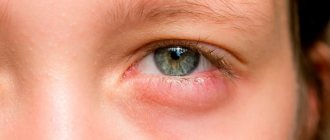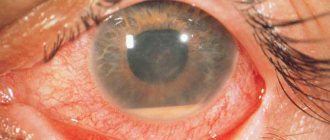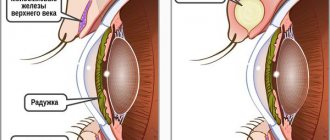Women are at greater risk of developing cystitis than men. The cause of inflammation is microorganisms that have entered the bladder. As the disease progresses, frequent urge to urinate, pain during bowel movements, and general malaise occur. Body temperature rises to subfebrile. Douching for cystitis helps relieve irritation and burning in the urethra and vagina.
Acute cystitis should be treated immediately. The disease does not tolerate neglect and quickly becomes chronic. One of the likely complications is kidney damage. Treatment is carried out on an outpatient basis and often includes not only the use of oral or injectable medications, but also additional methods. Douching is very common among them.
Cystitis
Inflammation of the bladder occurs as a result of infection. Pathogenic bacteria can enter the urinary system from the kidneys, vagina, urethra, prostate and other, more distant foci of inflammation. The disease can occur both acutely and chronically. Most patients suffer from a long course of pathology. Therefore, it is recommended to relieve signs of the disease not with the help of pharmacological drugs, but using folk recipes, since in most cases they do not carry absolutely any negative consequences.
The disease begins abruptly. This is usually preceded by another pathology or banal hypothermia of the body and a decrease in immune defense. The patient feels pain when urinating, urine is released in small portions, and the urge to urinate becomes frequent. In the acute phase, the temperature may rise. In some cases, the signs of the disease are so pronounced that inpatient treatment is indicated. This is especially true for purulent and ulcerative pathologies.
Causes of the inflammatory process
Most often, women suffer from cystitis because their urethra is wider and shorter than that of men. Bacteria that cause disease can belong to different groups and species. The most common include intestinal flora (can get into the urethra or vagina if personal hygiene is not observed, wearing underwear that is too tight, and so on), staphylococci, ureaplasma, streptococci, as well as specific pathogens of diseases transmitted through sexual contact.
The cause of inflammation can be infection with viruses. In most cases, diagnosis reveals herpes simplex virus type 2. Herpetic cystitis often causes complications, because in the acute phase the active release of the pathogen from multiple rashes begins. Cystitis can appear due to local hypothermia - this is the most common cause of pathology.
Will it cure cystitis?
Is it possible to cure cystitis with just douching? No you can not! This method is of an auxiliary nature and can only be recommended by the attending physician. Even in a hospital setting, the doctor will not limit himself to just prescribing rinsing - cystitis is treated comprehensively.
The most effective way is intramuscular administration of antibiotics (the most common cause of the disease is a bacterial infection). In order to cure the disease, it is necessary to use various medications. They are selected by a doctor based on blood and urine tests.
Prevention
- Avoid severe hypothermia.
- Wear underwear made from natural fabrics.
- Carry out hygiene of the external genitalia twice a day (using products with neutral Ph).
- Visit the toilet periodically to urinate (don't be patient).
By following these recommendations, a woman reduces the likelihood of cystitis.
Symptoms of cystitis
Characteristic symptoms of cystitis include increased urination and frequent urge to urinate. The hypersensitive, inflamed lining of the bladder reacts to urine components, so the body tries to eliminate the irritant as quickly as possible. Cystitis causes discomfort and pain in the urethra and lower abdominal segment. The pain is moderate because there are few receptors in the bladder area.
In addition, during the inflammatory process in the organs of the urinary system, an unpleasant smell of urine appears and the color changes. The bacterial process is often accompanied by the formation of pus. As a result, urine acquires a greenish tint. The intensity of the unpleasant odor depends on the amount of pus. With cystitis, body temperature may increase, but usually the figure does not exceed 38.5 degrees Celsius. In certain categories of patients, inflammation occurs without a general reaction.
Treatment at home
Treatment of cystitis in women at home is carried out only after visiting a doctor and prescribing suitable methods of therapy. A hot bath helps many patients relieve pain, but baths should not be used if purulent inflammation is suspected. Otherwise, it improves blood circulation and reduces spasm. If the symptoms are severe, there is an increase in body temperature, severe abdominal pain, then it is better to avoid hot procedures.
Chamomile is often used for cystitis. This is generally a universal medicinal plant that can be used even by pregnant women and is used for newborn children. The decoction can be used for douching. Women often use soda treatment, which simultaneously restores the vaginal microflora, because cystitis often develops as a result of inflammation or dysbiosis of the genital organs.
When treating cystitis in women at home, it is very important to follow the rules of personal hygiene. This applies not only to representatives of the weaker half of humanity, but also to men. You can wash yourself using special antibacterial agents, but it is better to follow the advice of traditional medicine, because many patients develop allergies from pharmaceutical drugs. Chamomile, honey, sage, mumiyo, celery, manganese potassium and so on will help.
Patient reviews
I recommend using Miramistin. The solution does not need to be prepared - it is sold in bottles with a spray. It is convenient to use and the action is very effective.
Savelyeva Irina Ivanovna, nurse
The first time I became acquainted with cystitis was after an autumn holiday in nature. It was cold and I was chilled. When I arrived home, I felt terrible pain when I went to the toilet. Very unpleasant. It happened over the weekend and I had to urgently look for a solution myself, without waiting for a visit to the doctor. I read on the Internet about douching with soda. I didn’t believe it, but I decided to try it, it was very painful. The method turned out to be effective. I recommend it to everyone.
Anna, 30 years old
I encountered this insidious disease immediately after my wedding. I couldn’t go to the toilet at all, it was very painful. My friend's mother is a gynecologist. She advised douching with Chlorhexidine. On the second day it became noticeably easier, but I still went to the doctor because the gynecologist advised me not to develop an acute infection.
Yulia, 35 years old
We tried to tell you in as much detail as possible about the simple procedure of douching. This affordable method is an excellent female assistant in the fight against cystitis. Of course, it is not able to get rid of this disease completely, but it will help relieve unpleasant symptoms and alleviate the condition.
Inpatient therapy
Douching for cystitis is carried out in a hospital setting if purulent cystitis is diagnosed. In this case, an antiseptic solution is injected into the bladder. Potassium manganese, boric acid or furatsilin can be used. These compositions are also effective for chronic cystitis. To achieve a therapeutic effect, 5-6 procedures are usually sufficient. Afterwards, patients can independently continue to do douching or baths with chamomile at home to maintain the achieved effect.
For granulation or bullous cystitis, a solution of collargol or dioxin can be used. Sea buckthorn or rosehip oils are indicated for the catarrhal form of the disease. For purulent cystitis, doctors prescribe terrilitin, chymotrypsin or chymopsin for rinsing. If it is necessary to heal ulcers, Actovegin is effective. In parallel, it is recommended to carry out hot baths. Metacin is used if, as a result of a long-term inflammatory process, the volume of the organ has decreased.
Procedure technology
The technique for performing this manipulation in a hospital will differ from that at home. The fact is that the source of the disease (cystitis) is in the urethra and bladder, and when douching the vagina, the solution does not get there.
Therefore, in especially severe forms, it is necessary to douche the bladder, which can only be done in a hospital.
Flushing the bladder is not a very pleasant procedure, but it is very effective. In case of severe cystitis, it is with the help of this method that it is possible to achieve a rapid improvement in the patient’s condition.
In a hospital setting
Only people with medical training and under sterile conditions can do douching. Acute cystitis is not treated in this way. This is a necessary measure in case of serious complications (for example, with suppuration), when home treatment is not enough.
The health worker uses the following tools:
- rubber tube;
- Esmarch's irrigator;
- disposable gloves for doctors;
- solution (only freshly prepared);
- tray;
- oil (sterile).
Each condition listed below is important! The procedure is carried out as follows:
- The genitals must be treated with an antiseptic.
- To make insertion of the tube easy and painless, its tip is lubricated with sterile oil.
- Esmarch's mug is filled with a medicinal solution for rinsing (150 ml), the temperature of which is 37 degrees.
- The device is connected to the tube, after which 50-60 ml of antiseptic is injected directly into the vagina.
- At the end of the procedure, the solution flows through the catheter into a sterile tray.
- The rinsing is repeated several times, and the antiseptic solution that has left the vagina is poured from the tray into the vessel.
At home
Home manipulation only helps to eliminate symptoms, reduce burning in the urethra, and remove bacteria that can enter the vagina from the urinary ducts.
Tools:
- syringe;
- rubber enema;
- Esmarch's irrigator;
- large volume syringe (without needle).
Technology:
- Before the procedure, it is necessary to rinse the external genitalia well.
- The tip of the selected tool is lubricated with Vaseline.
- The procedure is performed in a lying position.
- The patient raises the pelvis.
- Before inserting the tube, the woman relaxes the vaginal muscles.
- The contents are introduced carefully, without sharp pressure, so that medicinal substances with elements of the vaginal microflora do not pass through the cervix.
Use liquid with a temperature of 37-38 degrees.
It is best to douche before bed.
The essence and methodology of the procedure
Douching is the introduction of a medicinal solution into the vagina for the purpose of special therapy or as a prophylaxis. To carry out the procedure, a bulb (enema, syringe) is used. The method remains quite effective and in demand, despite the latest treatments. Douching is indicated as an auxiliary treatment method for cystitis and gynecological diseases.
The healing liquid may have antibacterial, healing, relaxing, analgesic or other properties. The technique of douching for cystitis is simple.
Types of douching for cystitis
The meaning of the procedure is to wash the vagina using special means. If you do it correctly, you will not experience pain. But douching is an addition to the main treatment prescribed by a therapist or urologist.
The introduction of solutions and washing disinfects the external and internal genital organs (labia majora and minora, vagina, cervix). There will be no direct impact on the bladder (unless you are being treated in a hospital, where medical professionals will catheterize and flush the bladder with a Janet syringe).
With cystitis, bacterial and fungal infections develop, and less often, viral urinary tract infections, so treatment must be selected accordingly.
Douching technique
To achieve the maximum therapeutic effect, the procedure is performed in a lying position, the pelvic area should be slightly elevated. It is convenient to douche for cystitis, for example, while lying in the bathtub with your feet on the sides. All manipulations must be performed carefully and without haste to prevent mechanical damage to the genital organs. The medicinal solution must be injected into the vagina under slight pressure so that the liquid washes the walls but does not enter the uterine cavity. As a rule, it is recommended to douche for cystitis in the evening. In the acute period, the procedure is performed twice a day.
How to use a syringe? A gynecological syringe is a simple and inexpensive instrument that is used in the treatment of various infectious, fungal and gynecological diseases. The syringe must be rinsed and filled with a medicinal solution before the procedure. Then you can douche for cystitis and other diseases of the genitourinary system. The liquid is released slowly, but under slight pressure, into the vagina. Then you need to lie quietly in the same position for 5-15 minutes.
The liquid for the procedure should be warm, but not hot. The permissible period of treatment is no more than 5-6 days. One procedure lasts about 5-15 minutes (no more than 15). All devices that are used for douching with chamomile for cystitis or other medicinal solution must be clean and individual. Solutions should be prepared immediately before the procedure and not left for the next time. It is important to remember that cystitis needs to be treated only comprehensively. Only douching will help with mild forms of the disease; antibiotics and thermal procedures are usually also prescribed.
Indications for the procedure
It is incorrect to categorize this method of treatment as traditional medicine - it has long been successfully used for urethritis, ureaplasmosis, candidiasis, etc. Cystitis involves the urethra and vagina in inflammation. Indications for douching for this disease are:
- itching at the entrance to the vagina;
- burning in the urethra;
- sharp pain in the urethra upon completion of urination.
Harmful organisms multiply, inflammation intensifies, and the mucous membrane is irritated. Douching with medicinal drugs soothes and provides symptomatic therapy.
When a diagnosis is made and therapy is prescribed by a specialist, the patient does not need to endure pain; women use available methods to get rid of cystitis.
Basically, medicines and herbs, the solutions of which a sick woman has to douche with, are universal and suitable for therapy for various “female problems” (for example, chamomile decoction). Others have a narrower range of application.
Along with the “washing” procedure, painkillers and antispasmodics are taken.
Pros and cons of the procedure
You should not count on an immediate effect from the event, the function of which is, nevertheless, more auxiliary. The main advantage of douching is the relief of inflammation in the vagina, which always accompanies cystitis.
However, there are also disadvantages. The most significant thing is that you wash away beneficial microflora from the vagina along with pathogenic ones. Just as antibiotics kill both harmful and bifidobacteria, the medicinal solution will remove beneficial microorganisms from the genitals. The role of the biocenosis, consisting mainly of lactobacilli, is to protect against infection.
It is important to remember that when douching, all microflora is washed out of the vagina: both harmful and beneficial. The disturbed balance must be restored by taking prebiotics and probiotics (in particular, intravaginally in the form of suppositories).
In addition, solutions administered under pressure can enter the uterine cavity and cause inflammation. Endometritis is a very serious, severe disease, so you need to douche correctly.
Contraindications
Douching should not be used as a preventative measure, as this disrupts the natural balance of microflora. For the same reason, “washing out” should not be carried out for more than two weeks in a row.
Other contraindications include:
- onset of menstruation;
- pregnancy (especially the first trimester);
- inflammatory processes in the uterus and appendages;
- the first month after curettage of the uterine cavity;
- day before submitting a smear for analysis.
Chamomile decoction for douching
The most commonly used therapy is chamomile infusion. This is a good natural antiseptic with an active anti-inflammatory effect. For cystitis, the decoction is taken either orally or used for douching and sitz baths. For douching you need to take 2 tbsp. l. dry raw materials, pour one liter of boiling water and bring to a boil. After the solution has cooled, you need to strain it through two or three layers of gauze. To enhance the antibacterial properties of the decoction, you can add a tablespoon of calendula flowers.
Soda solution for the procedure
Douching with soda is effective for cystitis. To prepare the solution, one teaspoon of soda is dissolved in one liter of boiled water. Douching is carried out with a warm solution. After the procedure, it is recommended to lie down for half an hour. In acute cases of the disease, douching can be combined with sitz baths. To prepare, you need to take two liters of boiled water and two teaspoons of soda. During the bath, the upper body should be well wrapped. Such douching should not be carried out during pregnancy, during menstruation and after 40 years.
How to douche for cystitis
Each douching product has its own effect and is selected by the doctor based on test results, the severity of the disease, and the individual characteristics of the patient’s body.
Below we will consider in detail the solutions to which pathogenic microorganisms that cause inflammation are most sensitive. We will introduce readers to the technique of performing the douching procedure at home and in the hospital.
Soda
A solution of baking soda for cystitis helps relieve pain and soothe the inflamed mucous membrane of the vagina and urethra.
Algorithm for preparing liquid and application:
- One teaspoon of soda (without a slide) is diluted in a liter of boiling water.
- After the solution has cooled to room temperature, you can start douching with soda.
Be careful: introducing hot products will only increase irritation of the genital mucosa.
Potassium permangantsovka
When mixing permanganate salt with water, be very careful, as a solution that is too saturated can cause a burn to the sensitive surface of the internal genital organs.
Procedure technology:
- Add several crystals of potassium permanganate to boiled water at a comfortable temperature and stir thoroughly until completely dissolved. The color of the homogeneous liquid should be pale pink, without sediment.
- After the drug has completely dissolved, douching is performed.
Chamomile
Chamomile decoction relieves inflammation and has an antibacterial effect. Do not use grass in bulk - this is less convenient, because you will have to filter the liquid through both a sieve and a gas cloth. Only the solution is poured into the vagina (without parts of the plant flowers).
Stages of solution preparation and application:
- Two bags of chamomile (sold in most pharmacies) are placed in an enamel bowl and filled with 1 liter of water.
- The liquid is brought to a boil. Make sure that the bag does not tear during the brewing process. If the integrity is broken, strain as recommended above, or use a new one.
- The finished light yellow liquid must be cooled and applied according to a known scheme.
Douching with chamomile for cystitis is a common procedure for women.
Medicines
Popular medications for douching include:
- Miramistin is a drug with an antibacterial and antifungal spectrum of action. They even wash purulent wounds and burns. Miramistin kills bacteria, fungi and complex viruses, helps damaged surfaces regenerate. Special bottles of the medicinal substance with a urological attachment are produced. You can also use tampons soaked in miramistin ointment (insert into the vagina for an hour every day for 1.5-2 weeks).
- Chlorhexidine, which can be prescribed not only for cystitis, but also for vaginosis and colpitis. Found application in pediatric gynecology. It has a minimal effect on the cells of the body - it “works” on the surface. For gynecological and urological diseases, purchase Chlorhexidine in the convenient form of vaginal suppositories.
- Furacilin is one of the most accessible and popular anti-inflammatory drugs. Almost every person dissolved a tablet in a glass of hot water, and then gargled with the cooled liquid for sore throat or pharyngitis; washed the cut, etc. Furacilin is also good for cystitis. First, as in the case of using Miramistin and Chlorhexidine, it is necessary to diagnose the sensitivity of pathogens to the drug.









